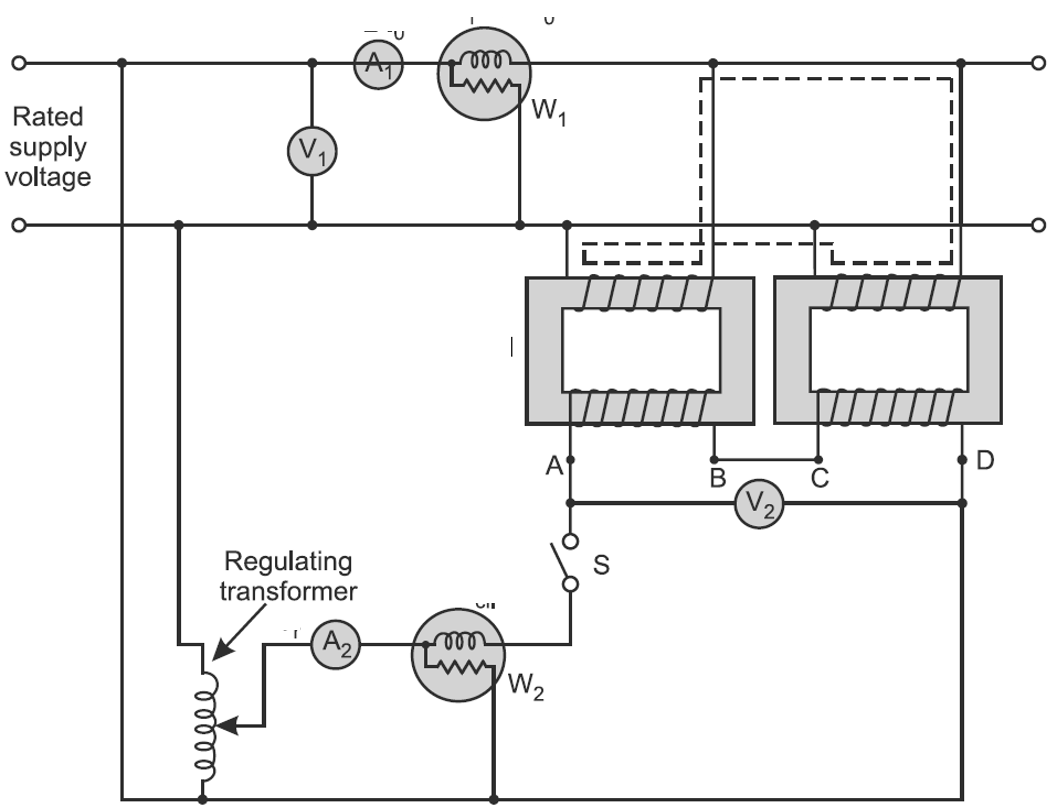This test is also known as the Regenerative test, back-to-back test or sumpner test. This test is for finding out the iron losses, copper losses and the rise in temperature for transformers. In this test two transformers of identical ratings are taken. The primary of both the transformers are connected in parallel across the rated voltage and frequency. The wattmeter W1, gives the total core losses of both the transformers.

Fig. 1: Sumpner test
The secondaries are connected in such a way that their terminals of same polarity are short circuited. Both secondaries are connected as their polarities are in opposition. Connect B and C terminals and a voltmeter across A and D. The voltmeter V2 should be of double the range of one secondary winding. The double reading indicates that the connected terminals are having opposite polarity. In that case connect B to D and the voltmeter will now give zero reading. The zero reading indicates that the secondaries are in opposition and the terminals of same polarity can be joined.
In that case there is no secondary circulating current, because the voltage are in opposition having same potential difference. In order to flow some current in secondary winding the injecting transformer is used and the required voltage is injected to circulate the full load or any other desired load in the secondary windings as shown in Fig. 1. The circulating current will have the direction as marked by dotted lines. The current will not effect the wattmeter W1 reading. These are the core losses of both the transformers. Wattmeter W2 will give the copper losses of the both transformers. Thus when copper losses and core losses are known, the efficiency can be calculated. The main advantages of this test is that the transformer can be loaded for several hours without consuming much power, as only the losses are fed. The temperature rise and behaviour of the transformer at that particular temperature, losses and efficiency can be observed and calculated.